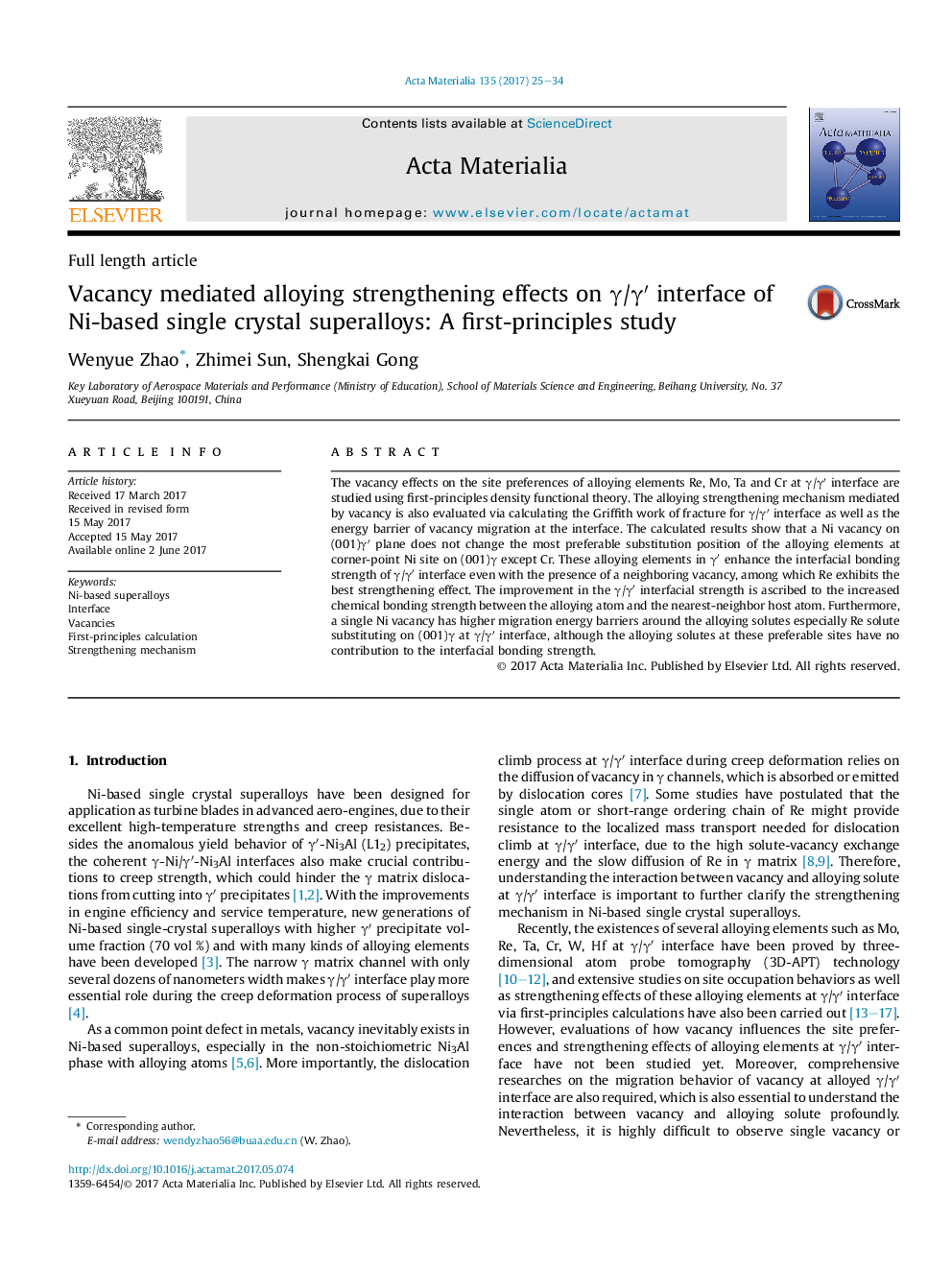| Article ID | Journal | Published Year | Pages | File Type |
|---|---|---|---|---|
| 5435890 | Acta Materialia | 2017 | 10 Pages |
The vacancy effects on the site preferences of alloying elements Re, Mo, Ta and Cr at γ/γ′ interface are studied using first-principles density functional theory. The alloying strengthening mechanism mediated by vacancy is also evaluated via calculating the Griffith work of fracture for γ/γ′ interface as well as the energy barrier of vacancy migration at the interface. The calculated results show that a Ni vacancy on (001)γ′ plane does not change the most preferable substitution position of the alloying elements at corner-point Ni site on (001)γ except Cr. These alloying elements in γ′ enhance the interfacial bonding strength of γ/γ′ interface even with the presence of a neighboring vacancy, among which Re exhibits the best strengthening effect. The improvement in the γ/γ′ interfacial strength is ascribed to the increased chemical bonding strength between the alloying atom and the nearest-neighbor host atom. Furthermore, a single Ni vacancy has higher migration energy barriers around the alloying solutes especially Re solute substituting on (001)γ at γ/γ′ interface, although the alloying solutes at these preferable sites have no contribution to the interfacial bonding strength.
Graphical abstractFigure optionsDownload full-size imageDownload high-quality image (329 K)Download as PowerPoint slide
